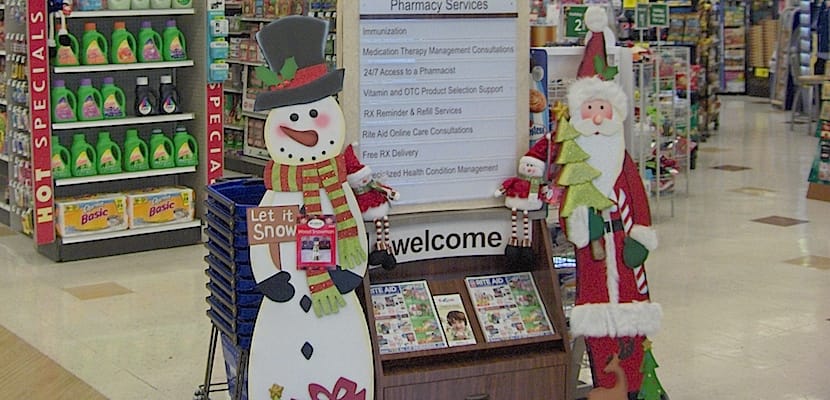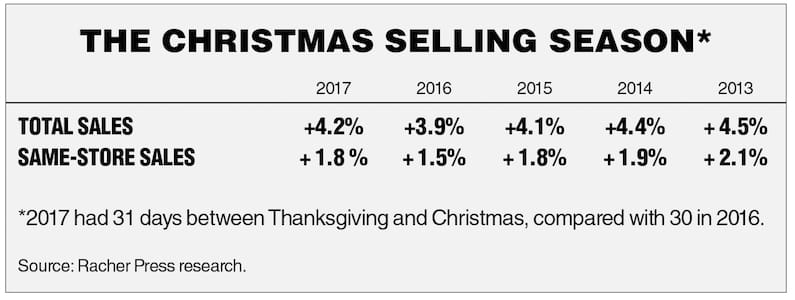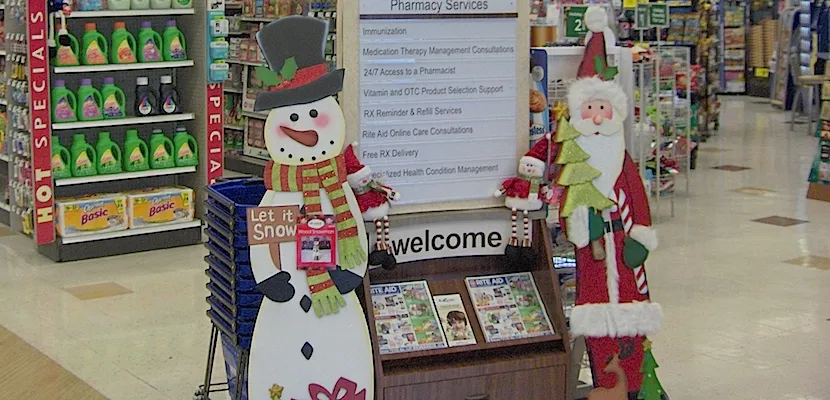
NEW YORK — Chain drug store holiday sales bettered last year’s results, with total dollar volume rising more than 4%.
In comparison to the 2016 holiday season, when anxiety over the new administration may have peaked, consumer confidence was up this year, propelled by income gains and the long-running bull market.
Chain drug store sales for the 2017 Christmas selling season rose 4.2%, edging up from a 3.9% gain the year before, according to research by Racher Press Inc., the publisher of Chain Drug Review.
Same-store sales for the period were up 1.8%, higher than last year but still below the 2.1% uptick in 2013, when chain drug holiday sales grew 4.5% — the largest increase over the past five years.
The 2017 holiday selling season had 31 days between Thanksgiving and Christmas, a day more than in 2016.
To help last-minute shoppers, Walgreens had stores open on Christmas Eve and Christmas Day. Customers could also order gifts and products online at Walgreens.com by Dec. 20 to guarantee delivery in time for the holiday.
“With an elevated product assortment, including many gifts under $20, Walgreens looks to make it easy to be holiday ready,” head of seasonal merchandising Heather Hughes stated.

The National Retail Federation’s latest holiday retail sales data reflected “a strong consumer who is confident about the current and future state of the economy,” according to chief economist Jack Kleinhenz.
A greater willingness to spend and the purchasing power of consumers “will continue to be an economic driver of growth into 2018,” he added.
E-commerce maintained its appeal, with half of last-minute shoppers planning to purchase gifts online.
“Similar to what we saw over Thanksgiving weekend, consumers are leveraging their smartphones to guide them on their final purchases for the holidays,” explained Phil Rist, executive vice president of strategy at Prosper. “Retailers this year have needed to offer great deals online and encourage young people making purchases through their smartphones to take advantage of offerings such as buy online and pick up in-store.”
And it appears that retailers’ strategies worked. Mastercard SpendingPulse reported a 4.9% rise in holiday sales for 2017, including a new record for dollars spent and the largest year-over-year increase since 2011. Online sales for the Nov. 1 to Dec. 24 period jumped 18.1% from last year, lifted by a late surge, MasterCard said.
The heavy early-season promotions by retailers paid off, as the first three weeks of November saw sizable gains in sales, MasterCard noted. Importantly, shoppers were still spending late into the season, with Dec. 23 coming in after Black Friday as the biggest in terms of single-day spending. That energized certain categories, including jewelry, which grew 5.9% with a lift from last-minute sales.
“Evolving consumer preferences continue to play out in the aisles and online sites of retailers across the U.S.,” observed Sarah Quinlan, senior vice president of market insights at Mastercard. “Overall, this year was a big win for retail. The strong U.S. economy was a contributing factor, but we also have to recognize that retailers who tried new strategies to engage holiday shoppers were the beneficiaries of this sales increase.”
Among categories, sales of electronics and appliances climbed 7.5% during the holiday season, the strongest growth of the last 10 years, according to MasterCard. Home furniture and furnishings category grew 5.1%, as did home improvement.
Of note, specialty apparel and department stores — which both traditionally see most of their sales occur in-store — saw moderate gains, an encouraging development given recent store closings, MasterCard said.









